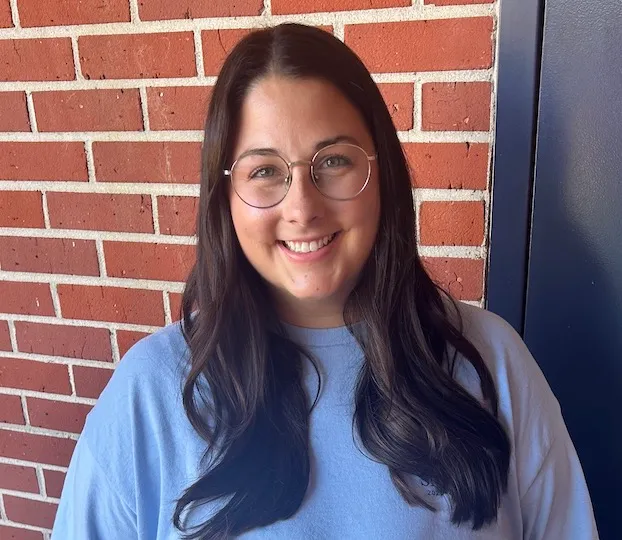
For Gabrielle Lewis, 28, second grade is the “sweet spot.”
She is a second-grade teacher at St. Margaret Catholic School, where she has taught for three years. In second grade, students begin their transition into independence. This is the phenomenon that Lewis loves to witness.
“They are just learning to be independent, but they still depend on me for certain things,” she explained. “Their personalities are really forming and they are becoming their own person. They are mature enough to have a meaningful relationship with you while still being childlike”.
She was born in Lake Charles and grew up in Iowa, where she now lives with her husband. Her learning experience was tranquil, she recalled. School came easily to her. But looking back, she realized there was one teacher who remains in her memory.
Her first-grade teacher, Kimverly Richard, impacted her “through all of her actions” that year, she said. Be it through fun lessons or the relationship she formed with her students, Richard left an impression on Lewis.
Her goal is to emulate this impact in her own classroom.
“Lots of laughter, love, fun, and excitement, all while learning the required content. My students spend more time in our classroom than they do at their own homes. The experiences they have in my classroom are some of their childhood memories that they will remember forever,” she said. “To me, that is powerful.”
She graduated from Iowa High School in 2015 and attended McNeese State University to earn a Bachelor’s in early childhood education.
She is now in her sixth year as an educator. Her career began in Iowa at J.I. Watson, where she taught first grade for one year. She was presented with an opportunity to move up to second grade, and that is where she has been ever since.
She taught at J.I. Watson for three years before she decided to work at St. Margaret Catholic School. As a second-grade teacher, she teaches ELA, math, social studies, science and religion lessons.
She always knew she wanted to work with younger children, but she was unsure of which grade. As a child, she would get home from school and mirror her day in her own playroom that she turned into a classroom.
“My brother still likes to make fun of me for this!”
When she was presented with the opportunity to teach second grade, she had no idea how much she would fall in love with second grade.
In addition to the independence her students begin to develop, her favorite part of her role is to see the “lightbulb” moment within her students. When a concept finally “clicks,” she is the first to see it.
She helps make these lightbulb moments happen by helping students learn how to navigate their own learning styles.
“Once the learning style is discovered and the students start making those connections, it is just so great. I love to see the look on their faces when that “lightbulb” comes on.
“My very close, second favorite thing about teaching is just the students. Kiddos are just so special.”
Lewis is close with her students. For her, it is essential to form personal bonds with students that enhance their education. By learning about their lives both inside and outside of the classroom, she can be there for them in any situation.
“I always love to hear the things they come in so excited to tell me from the night before or over the weekend,” she said. “They truly become my little besites.”
This learning takes place in a classroom that is a safe haven. Lewis allows her students to “be themselves, struggle and succeed.” They learn to be authentic, fail and try again – and do so as a family.
“I believe that this forms a bond between the students that helps each child feel comfortable and safe within our classroom walls,” she said. “If a child feels safe, they are more likely to grow and succeed within the classroom.”
With the right resources, the right curriculum, and (most importantly) the right teacher, students are emboldened to challenge themselves and reach new heights. Lewis’s students are held to high expectations. And they achieve them with her encouragement and guidance.
“My students are taught many routines at the beginning of the school year and we practice these routines for weeks,” she said. “I believe that teaching students routines to help our classroom run smoothly each day instills a sense of accountability within each student. It teaches them that they are responsible for their success.”